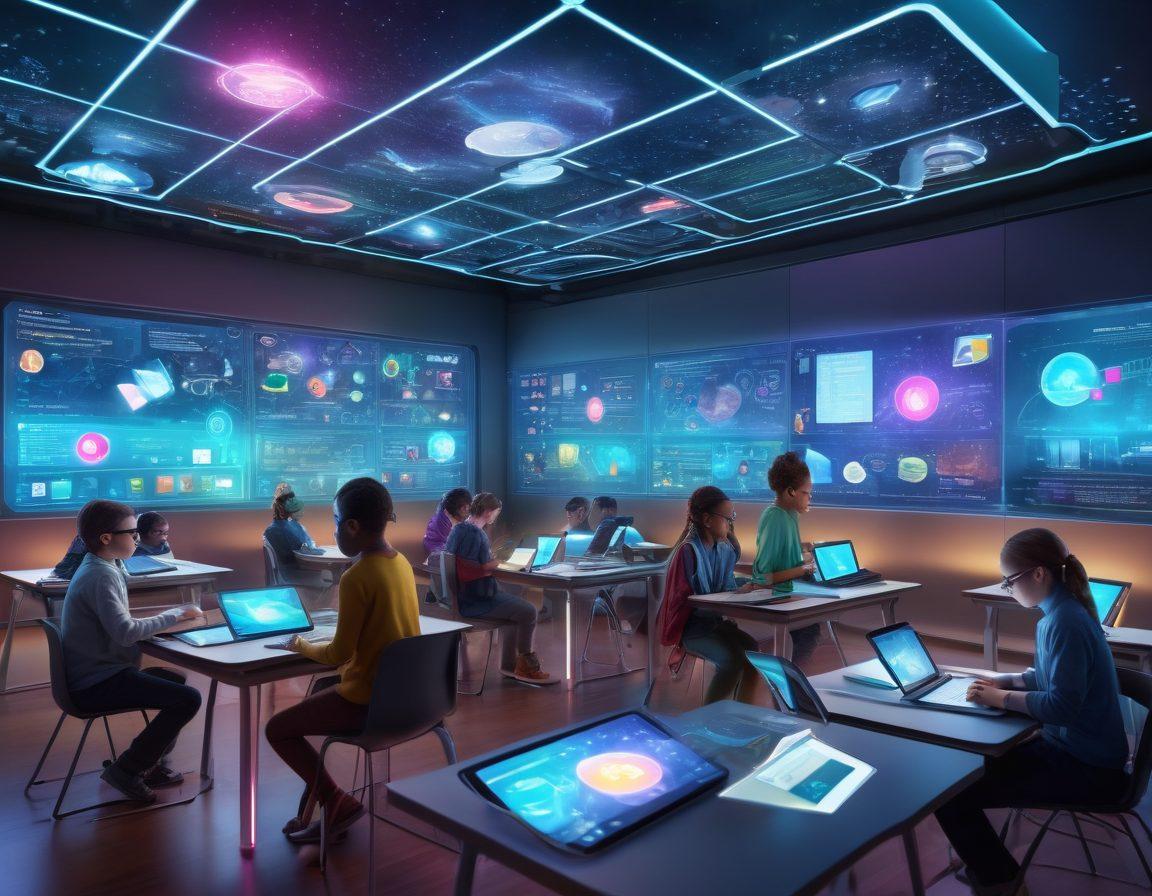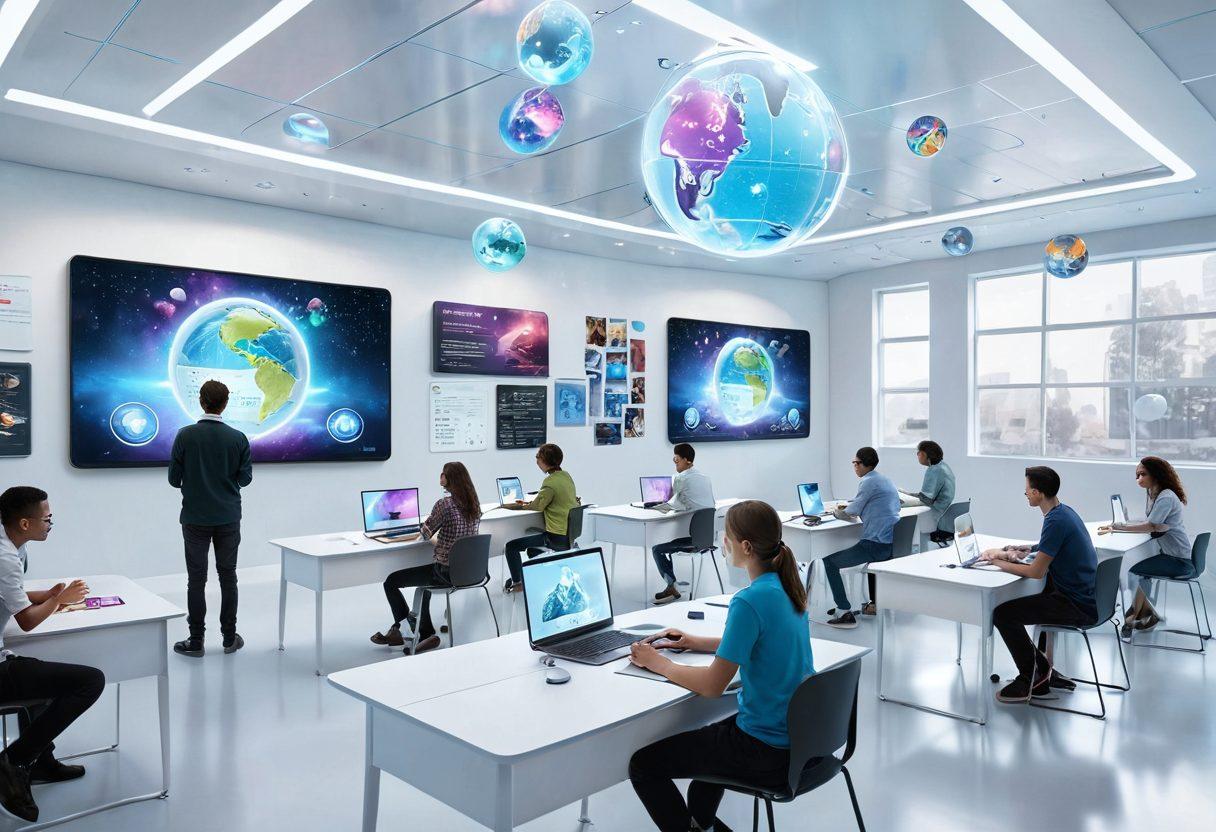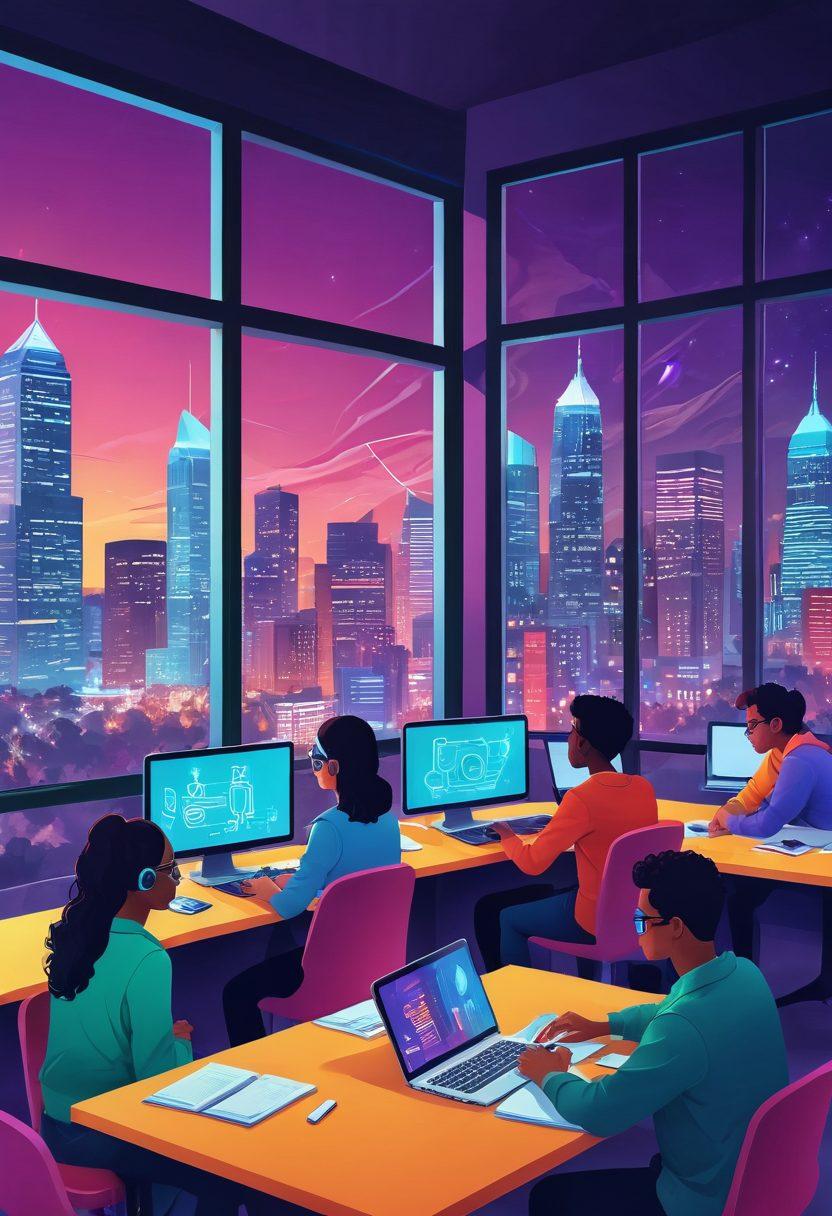Unlocking the Future of Learning: Essential Blogging Resources for Digital Education
In today's fast-paced digital world, education is evolving at lightning speed. With traditional classrooms often blending into online platforms, educators are finding themselves at the forefront of a new era—one where blogging and educational resources become critical allies in the quest for effective e-learning. How can teachers leverage these tools to enhance student engagement and promote a thriving learning community? Let’s take a deeper dive into the essential blogging strategies that empower educators and shape the future of online education.
Imagine a world where learning is not just confined to textbooks but extends beyond the classroom walls, where students can explore knowledge at their own pace and convenience. This is the essence of digital learning and personalized learning. By maintaining an academic blog, educators can provide an array of online study materials and study guides that complement the curriculum support they offer in the classroom, transforming the way students access information. What’s more, blogs serve as dynamic platforms where educators can share the latest teaching resources and digital study aids, paving the way for interactive learning.
In the realm of education technology, blogging fosters a unique interplay between students and educators. For instance, teachers can write about innovative homework help techniques or textbook alternatives that pave the way for deeper understanding and enhanced retention of information. This opens a channel for feedback and dialogue, making learning a collective and evolving process. As one teacher aptly put it, ‘A blog is not just a digital notebook; it’s a window into the classroom!’ How has blogging transformed your own teaching methods?
Equipped with the right blogging strategies, educators can create compelling content that resonates with diverse learners, playing a vital role in their academic journey. For instance, themed posts around upcoming events or learning objectives can help set the tone for classes and ignite curiosity. By incorporating multimedia elements such as videos, podcasts, and infographics into the blog, teachers can cater to various learning styles and keep students engaged. The question remains: Are you maximizing the potential of your online presence to inspire your students?
To cultivate a thriving digital learning environment, educators must tap into the rich resources available in the blogging world. Collaborating with other educators to share experiences, challenges, and innovative solutions fosters a sense of community and professional growth. However, the key lies not just in the act of blogging but in the willingness to adapt, grow, and respond to students’ needs through thoughtful content. As we unlock the future of learning, let us remember: the goal of e-learning is not merely to teach but to ignite passion and curiosity in every learner, ensuring they truly 'learn at home' and beyond.
Navigating the Digital Classroom: Essential Resources for Modern Education
As we step into an era dominated by technology, the landscape of education is rapidly transforming. Have you ever thought about how the digital world is reshaping the way we learn? Navigating the digital classroom is no longer an afterthought; it is essential for students, educators, and anyone involved in online education. With the wealth of educational resources available at our fingertips, the potential to enhance learning and teaching has never been greater. Let's explore the vital tools that can make this journey through the digital learning environment both enriching and enjoyable.
In the age of e-learning, traditional classrooms have expanded their horizons. The digital classroom is a dynamic platform teeming with interactive learning opportunities. Imagine a space where learners can connect with peers across the globe and share study guides or digital study aids. This is the beauty of modern education! The question arises: how do we harness this potential? The answer lies in utilizing a diverse array of educational resources designed to cater to both educators and students alike. Engaging with a vibrant learning community can significantly boost student engagement and drive academic success.
Every educator knows the challenge of finding quality teaching resources. However, the internet offers a treasure trove of content that can serve as textbook alternatives. From academic blogs to specialized teaching materials, the diversity in online study materials means that tailored support for various curricula is just a click away. What if we could personalize our learning journey? Students can access homework help, interactive tools, and engaging content that resonates with their unique learning styles, all while learning from home. Embracing technology enables a more differentiated, personalized learning experience that traditional methods often lack.
Imagine a world where every student has access to the same high-quality education resources, regardless of their location. This is the promise of education technology: a solution that bridges the gap, providing curriculum support and digital learning opportunities. With the right tools, students can thrive in a virtual education setting and feel empowered to achieve their academic goals. By prioritizing skill development and fostering curiosity, educators can cultivate an environment where students take ownership of their learning journey and pave their own paths to success.
Ultimately, navigating the digital classroom boils down to adapting to the evolving educational landscape. The plethora of resources and learning tools available can feel overwhelming, but this is precisely where the magic happens. As we delve deeper into the world of blogging about education, we can uncover new strategies and insights that will help shape our approach to learning and teaching. How are you navigating this digital revolution in education? With the right mindset and a commitment to exploring available options, we can unlock the future of learning, one blog at a time.
Innovative Tools and Techniques to Enhance Student Engagement in Online Learning
In today's fast-paced digital world, the landscape of learning continues to evolve, making it more critical than ever for educators and students to find innovative resources that enhance engagement. The rise of online education is transforming how we access knowledge, and with a plethora of educational resources at our fingertips, the challenge now lies in sifting through them to identify what truly adds value. Why not make the most of these resources? In this blog post, we will explore innovative tools and techniques to enhance student engagement in digital learning environments, ensuring that every learner can thrive and succeed.
Engagement is the heartbeat of any successful educational journey. Think back to your own school days - was it the dry textbooks or the dynamic discussions that ignited your passion for learning? Using technology in ways that foster interactivity and student participation can create more exciting e-learning experiences. Imagine students collaborating in real-time on projects, or exploring complex topics through gamified learning tools that make the subject matter come alive. The key takeaway here is clear: interactive learning not only captures attention but also drives retention. So, which tools foster this kind of depth in engagement?
Innovative e-learning platforms are cropping up that allow for personalized learning experiences tailored to each student’s strengths and challenges. Whether it’s adaptive learning software that adjusts curriculum support based on a learner's progress or digital study aids that provide customized study guides, the possibilities are endless. With the right educational technology, you can create a learning environment that allows students to learn at home at their own pace and revisit complex concepts without the fear of falling behind. So, how can you incorporate these resources effectively into your academic blog or educational framework?
Consider harnessing the power of a learning community. Engaging students through forums, discussion boards, and collaborative projects can significantly enhance student resources. When students feel a sense of belonging and connection, they are more likely to participate actively in their education. Educational blogs can serve as platforms for sharing best practices, tips, and even homework help among peers. This collective knowledge not only fosters camaraderie but also allows for the exchange of diverse perspectives that enrich the learning experience. Have you ever thought about how these digital forums can deepen your understanding of a subject?
Lastly, let’s not overlook how effective education technology can serve as a means to bridge gaps in learning. With textbook alternatives like open educational resources (OERs) and interactive online study materials, educators have an unprecedented opportunity to reach students who might otherwise be disengaged. By implementing tools that provide instant feedback and support, we encourage a cycle of continuous improvement and motivation. The question remains: are we ready to embrace these shifts and harness the full potential of digital learning? It's time to unlock the future and transform our educational approaches to not just meet but exceed the needs of today’s digital learners.


